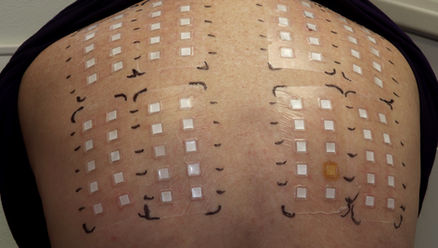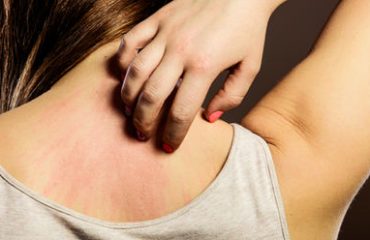Are you wondering if that mysterious skin rash you have is a result of an exposure to an allergen? Our skin allergy specialist in Ellicott City MD says avoid these common contact allergens to prevent an allergic contact dermatitis.
What Is Allergic Contact Dermatitis?
Allergic contact dermatitis is a skin rash that develops in response to direct exposure to a substance called an allergen. Allergic contact dermatitis often starts as a pink or red patch at the point of contact with the allergen on your skin. With repeated exposure of the allergen on your skin this rash can progress to a painful, itchy skin rash with blisters and oozing lesions.
Who Is At Risk For Allergic Contact Dermatitis?
People who are most at risk for allergic contact dermatitis are those who have jobs or hobbies that bring them in frequent contact with allergens. These people include those who work in the healthcare industry, food handlers and processors, beauticians and hairdressers, machinists, and construction workers.
What Are The Most Common Contact Allergens?
Some of the most common contact allergens include:
- Plants—poison ivy, poison oak, poison sumac
- Metals, like nickel, gold, and cobalt;
Nickel is found in cosmetic jewelry;
Cobalt, in orthopedic and dental implants;
Gold in jewelry and dental restorations
- Topical antibiotics, like neomycin
- Topical steroids used to treat contact dermatitis
- Latex rubber-watchbands, underwear elastic, shoes, boots, sporting equipment, and latex exam gloves
- Lanolin-cosmetic products like balms, lipsticks, sunscreens, hemorrhoid preparations
- Fragrance mix-perfumes, soaps, and some skin lotions
- p-Phenylenediamine-scalp and facial hair dyes
- Formaldehyde-make-up, cosmetics, cleaning products, and certain skin creams
- Quaternium-15—found in personal care products like cosmetics, soaps, and shampoos
- Balsam of Peru—found in cosmetics and flavorings
How Is Allergic Contact Dermatitis Diagnosed?
A skin allergy specialist will first conduct a visual skin examination to diagnose allergic contact dermatitis. An allergic contact dermatitis skin rash forms around the area of direct exposure to the allergen. Sometimes skin biopsies are conducted to rule out other skin rashes. If the skin allergy specialist is confident that your skin rash is a result of direct contact with an allergen, then an allergy skin test called a patch test is performed to determine the exact allergen affecting you. Small samples of the 35 most common contact allergens (some of which are listed above) are applied to your back then removed 48 hours later. The skin allergy specialist will have you return in another 48-72 hours to read the results of the patch test revealing the allergen in question.
How Is Allergic Contact Dermatitis Treated?
The best way to treat allergic contact dermatitis is to identify the allergen causing your skin rash with patch testing and avoiding that allergen in the future. Before the allergen is identified the skin allergy specialist may give you topical or oral corticosteroids to lessen the effects of the skin rash. In some cases oral antihistamines are used as well. It is important to remember that as long as your skin is being exposed to the allergen, the allergic contact dermatitis will persist.
Our skin allergy specialist in Ellicott City MD, Danielle LeClair, NP, is trained in the diagnosis and treatment of allergic contact dermatitis as well as many other skin rashes. Give us a call at 410-870-8225 to schedule your appointment today.


